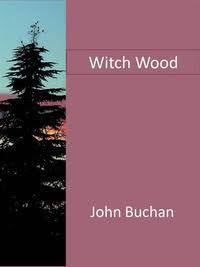7.8 /10 1 Votes7.8
Media type Print (Hardcover) Publisher Hodder & Stoughton | 3.9/5 Goodreads Publication date 1927 Originally published 1927 Genre Historical Fiction Country Scotland | |||||||||||||||||||||||||||||||||
 | ||||||||||||||||||||||||||||||||||
Similar John Buchan books, Classical Studies books, Speculative fiction books | ||||||||||||||||||||||||||||||||||
Witch Wood is a 1927 novel by the Scots author John Buchan, set in the Scottish Borders during the Wars of the Three Kingdoms. A significant portion of the dialogue is in Lowland Scots.
Contents
Plot
In a prologue to the novel, the narrator recalls legends of the time, 300 years ago, when the minister of the Kirk of Woodilee in the Scottish lowlands was spirited away by the fairies or – as some said – by the devil.
The story opens in 1644 with the coming of David Sempill, newly-ordained minister of the Church of Scotland, to Woodilee, a parish passionate in its support of the Covenant. Sempill is less committed to strict doctrinal practices than many of the Covenanters, and he finds himself attracted to the creed of Mark Riddel, a fugitive and follower of Lord Montrose, supporter of the King and enemy of the Kirk. Soon afterwards, when Riddel is injured, the minister secretes him within the manse.
One night in the feared Black Wood of Melanudrigill the minister stumbles across a diabolic rite in which figures wearing animal headpieces dance around a pagan altar. He later attempts to identify the ringleader and although unsuccessful manages to splash his clothes with pungent aniseed oil. The next day the wife of a prominent elder of the Kirk, Ephraim Caird, is discovered burning clothes on a fire which smells strongly of aniseed.
The plague comes to Woodilee. Sempill labours to prevent its spread helped by a newcomer named Mark Kerr who, unknown to the locals, is in fact the fugitive Mark Riddel. Nursing care is surreptitiously provided by a shadowy figure that the locals take to be a fairy but who is in fact Katrine Yester, niece of the local laird, to whom Sempill is secretly engaged. Katrine contracts the plague and dies. A local woman is accused by a pricker of being a witch and in spite of the best efforts of Sempill and Kerr is tortured and killed.
Sempill presents his evidence of Ephraim Caird’s heresy to the presbytery, the Kirk’s religious court, which rejects it as circumstantial and unreliable. In retaliation, Caird brings counter-charges against the minister for harbouring a fugitive, for associating with Mark Kerr (now publicly identified as Mark Riddel), and for keeping the company of an unknown woman. Sempill is found guilty and is excommunicated and ejected from his ministry.
On his way back from the hearing, Sempill meets Ephraim Caird near the Black Wood. He forces Caird to enter, kneel before the pagan altar, and to make his choice between Christ and the devil. The effort is too much for Caird who runs off in demented terror and is killed in a fall. The minister is never after that day seen again, giving rise to the legends mentioned in the novel's prologue.
In an epilogue, it is revealed that Sempill and Riddel had ridden to Leith and had boarded the first available ship out of Scotland.
Background
Witch Wood was written while Buchan was researching the revised version of his biography of James Graham, 1st Marquess of Montrose, who appears as a minor character in the novel. His research had raised questions of religious tolerance which he wanted to explore. The story was originally known as The Minister of Woodilee and was first serialised in British Weekly under the title The High Places. According to the historian Ronald Hutton, it was based upon the Witch-cult hypothesis of the anthropologist Margaret Murray.
Critical reception
Early critics were quick to recognise the significance of the novel, which has since come to be regarded as Buchan's masterpiece. The Spectator called it "this powerful, charming and spiritually earnest novel which almost enables Mr Buchan to be called a modern and terse Walter Scott", and the Glasgow Herald thought that it "must be adjudged the greatest of Mr Buchan's published works. That it concerns the land and history of Scotland, that it makes brilliant use of braid Scots dialect and that it enshrines many aspects, both admirable and contemptible, of the Scottish character are features that must give satisfaction to Mr Buchan's countrymen".
Witch Wood was the author's favourite novel and has been described as "a masterful tale of godliness in conflict with wickedness." C. S. Lewis wrote, "for Witch Wood specially I am always grateful; all that devilment sprouting up out of a beginning like Galt’s Annals of the Parish. That's the way to do it".
In The Interpreter's House (1975), David Daniell notes that Witch Wood is tightly enclosed, with everything taking place under a heavy, black, suffocating pall of evil. Buchan's writing, Daniell says, "catches the obscene out of the tail of the eye, where it is most effective". "Projecting his own favourite Scottish place, Broughton, back three centuries when the whole area was under forest, and doing it so convincingly, is a considerable feat. Doing it with such economic realism and keeping up a multiple pressure of plot makes it extraordinary". But Daniell's highest praise is reserved for the way Buchan presents "the ordinary people of the parish, the farmers who so represent the land that they are known by the names of their farms, the few cottagers, the herds and the elders and the children".
Adaptations
The novel was adapted twice by the BBC, first for Sunday Night Theatre in 1954, with Tom Fleming as Sempill, then in 1964 as a four-episode series, with Donald Douglas in the role.
